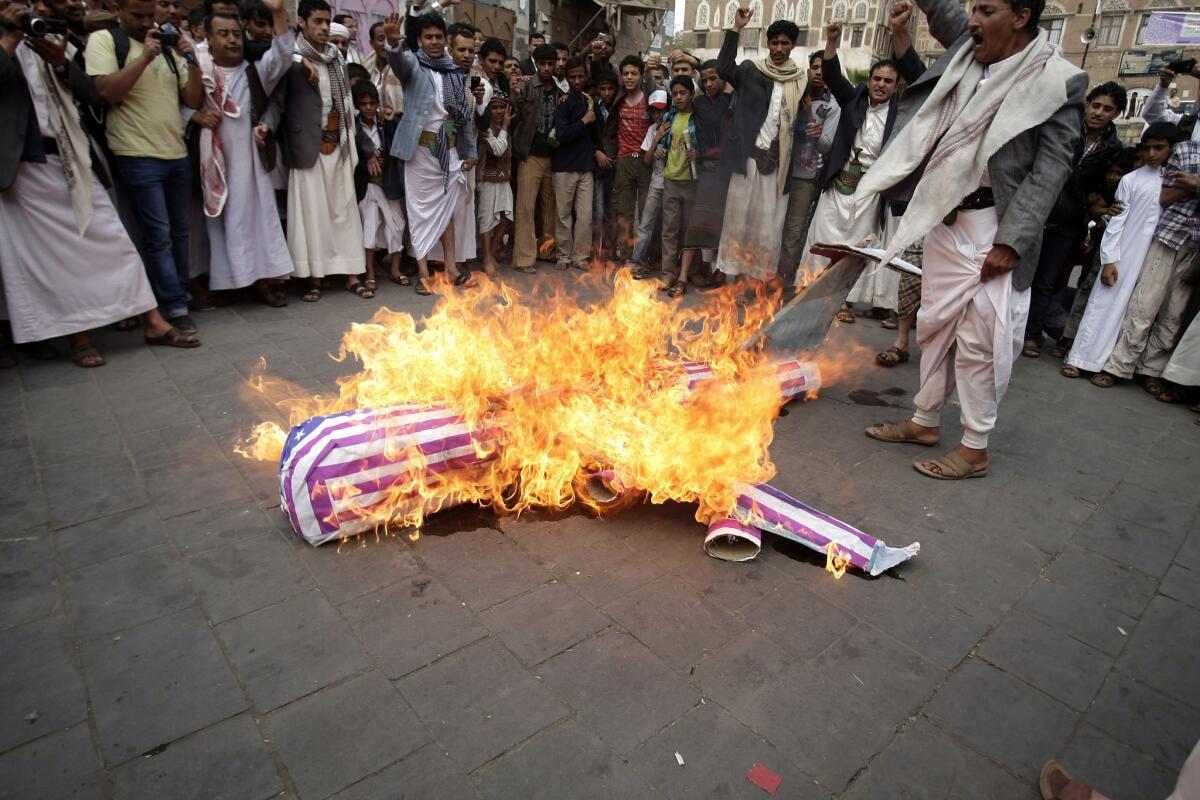Bringing drones out of the shadows

The use of unmanned aircraft to kill suspected terrorists, a practice that has dramatically escalated during the Obama administration, is receiving fresh and welcome scrutiny in Congress and elsewhere even as the number of drone strikes seems to be on the decline. Last week, Rep. William M. “Mac” Thornberry (R-Texas), the chairman of a House armed services subcommittee, introduced legislation to require the Pentagon to promptly inform Congress about every drone strike outside Afghanistan as well as about operations to kill or capture terrorists away from declared war zones.
And in a speech at Oxford University, Harold Koh, who until recently served as the State Department’s legal advisor, criticized the administration for not being “sufficiently transparent to the media, to the Congress and to our allies.” He urged the administration to publicize its standards for placing targets — Americans and others — on kill lists and to offer a clear tally of civilian casualties.
This page has repeatedly criticized the administration for its lack of transparency about the targeted killing of terrorists in Afghanistan, Pakistan and Yemen, and for its troublingly elastic definition of what constitutes an “imminent” attack on Americans that would justify the killing of a U.S. citizen abroad by drones or other means. The legality of targeting citizens without due process of law is an urgent issue.
But a debate about drones and targeted killings can’t be limited to questions about disclosure, accountability to Congress and legal standards. Nor should legitimate concern about the killing of Americans obscure the fact that about 3,000 foreigners have been killed in drone attacks, some of them high-level Al Qaeda operatives but many others “unknown extremists.”
As Rosa Brooks, a Georgetown law professor and former Pentagon official, put it in recent testimony before a Senate judiciary subcommittee: “Over the last decade, we have seen U.S. drone strikes evolve from a tool used in extremely limited circumstances to go after specifically identified high-ranking Al Qaeda officials, to a tool relied on in an increasing number of countries to go after an eternally lengthening list of putative bad actors, with increasingly tenuous links to grave or imminent threats to the United States. Some of these suspected terrorists have been identified by name and specifically targeted, while others are increasingly targeted on the basis of suspicious behavior patterns.”
Though estimates vary, it seems that hundreds of civilians also have died in drone strikes, a source of anti-American outrage in Pakistan and Yemen. That drones are more precise than manned jet bomber is small consolation for the families of those victims. In testimony before the Senate committee, Farea Al-Muslimi, a Yemeni activist and writer educated in the United States, described the effects on his village of a strike: “For almost all of the people in Wessab, I’m the only person with any connection to the United States. They called and texted me that night with questions that I could not answer: ‘Why was the United States terrifying them with these drones? Why was the United States trying to kill a person with a missile when everyone knows where he is and he could have been easily arrested?”
When even former officials of the Obama administration are expressing qualms about drones and targeted killings, it behooves the president and his advisors to reconsider the scope and utility of the policy. There are indications that such a reappraisal is underway. The Times has reported that administration officials are moving to shift authority for drone strikes from the CIA back to the Defense Department. There also have been reports that the administration will eliminate so-called signature strikes that are aimed not at particular individuals but at suspicious behavior, such as the massing of vehicles in areas thought to be under the control of Al Qaeda or similar groups.
For all their technological novelty, drones are weapons, and their use raises the perennial question of when and under what safeguards deadly force should be used to protect the national interest. More than a decade after the 9/11 attacks that provided the ultimate authority for the drone campaign, it’s time to take stock of whether that policy still makes sense.
More to Read
A cure for the common opinion
Get thought-provoking perspectives with our weekly newsletter.
You may occasionally receive promotional content from the Los Angeles Times.






